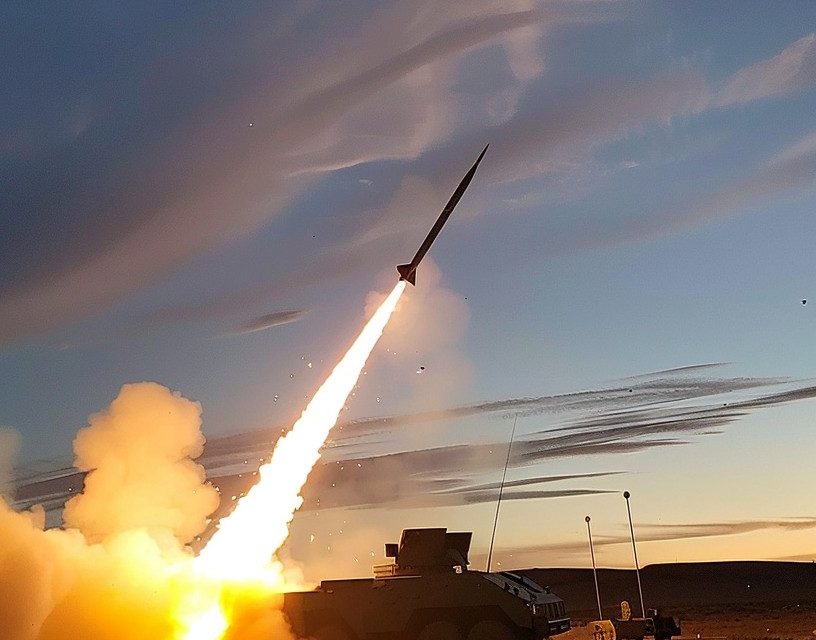by Professor Jen Lynds, UTIMES Advisor
Serhii Plokhy’s Nuclear Folly: A History of the Cuban Missile Crisis provides the general public a global viewpoint on the tumultuous decisions that led to its inception and resolution. It offers a comprehensive examination of the crisis, emphasizing the high-stakes errors, cognitive dynamics, and extreme stress that leaders on both sides of the dispute experienced.
This process involved United States President John F. Kennedy and his advisers, Soviet Premier Nikita Khrushchev, Cuban President Fidel Castro, and their superiors involved in the conflict. The author is a Harvard history professor who serves as the director of the Harvard Ukrainian Research Institute. He published several books on Russian and Ukrainian history, including Ukraine and Russia: Representations of the Past and The Last Empire: The Final Days of the Soviet Union. In twenty-seven chapters spread over five sections, the author argues that “there is indeed much to be learned from the experience of those who created and then resolved the crisis.”. Plokhy released the 464-page volume in 2021. Plokhy molded his research after several notable sources, including the records of senior Soviet government and Communist Party meetings and Kennedy’s White House recordings. He utilizes recently uncovered KGB documents from Ukrainian archives and other new Soviet-bloc materials to provide a detailed account of the viewpoint of the Soviet troops based in Cuba who experienced the situation while trying to implement Moscow’s directives. This book is also a warning, as he contends the world is “sliding back into the nuclear brinkmanship that characterized the 1950’s and early 1960’s,” and that it is “essential to educate new generations about the dramatic events of that era in a way that addresses the uncertainties of today’s world.”
The central premise is that nuclear war never occurred because neither Kennedy nor Khrushchev wanted it to happen. He disputes assertions that Kennedy and Krushchev had their hands on the wheels of history. Rather, he argues that both “marched from one mistake to another” and were not entirely in control of the powers at their fingertips or the circumstances in which they found themselves.
The book’s relevance stems from analyzing the human elements that nearly resulted in nuclear conflict. According to the author, the risk of warfare was the primary driver in Khrushchev and Kennedy’s choice to find a compromise. “The crisis did not develop into a shooting war,” Plokhy notes, “because Kennedy and Khrushchev both feared nuclear weapons and dreaded the very idea of their use.”
The crisis begins at the outset of the book. The author introduces Fidel Castro and explains his ascent to power in early 1959. Castro’s government in Cuba sparked widespread political discord and significant disquiet. The U.S. had hoped for better relations with Cuba after the dictator Fulgencio Batista was deposed, but another dictator replaced him. Plokhy outlines the beginning of the Kennedy administration, the debacle of the Bay of Pigs, and the Soviet decision to place missiles in Cuba.
The United States and the Soviet Union were on the verge of nuclear war in the autumn of 1962. To avert an American attack on Cuba and to reestablish the balance of power in the arms race, Nikita Khrushchev deployed nuclear missiles to the island. He did this despite Kennedy warning against sending offensive weapons to Cuba. Khrushchev fortified the defense of his Cuban enterprise by expediting the deployment of strategic missiles and dispatching offensive nuclear weapons. A threatened Kennedy acted quickly when U.S. spy planes observed the missiles. Khrushchev believed Americans would tolerate the missiles. He was wrong.
Plokhy focuses on Kennedy’s response, which was something Kruschev never predicted. The president said, “It shall be the policy of this nation to regard any nuclear missile launched from Cuba against any nation in the Western Hemisphere as an attack on the United States, requiring a full retaliatory response upon the Soviet Union.”
According to Plokhy, the United States implemented a naval blockade, or quarantine, of Cuba. The Strategic Air Command’s forces were placed on Defense Readiness Condition 2, one stage below nuclear war.
Through Plokhy’s utilization of declassified KGB documents, we gain a deeper understanding of the viewpoints and experiences of Soviet personnel, such as those in Soviet missile units and aboard the cargo ships that transported weapons to Cuba. This is due to the KGB agents and witnesses who posted their reports. He noted that Soviet officers and soldiers rushing to make missiles operational in Cuba suffered from low morale. The heat spread bacteria, trees were poisonous, and wounds festered in the sun. Plokhy wrote that, “Because of high temperatures and even higher humidity, food went bad very quickly. Worms began to show up in pasta and porridge, more and more of them as time went on.”
Plokhy portrayed Khrushchev as the ideal ringmaster. He balanced the demands of his Soviet advisers, the Kennedy administration, and the enmity of Fidel Castro, who was incensed upon discovering that Soviet missiles were leaving the island.
The book’s gaps are minor. The work could have benefited from a bibliography rather than relying on footnotes. The book’s map of Cuban missile sites could have more accurately represented the Soviets’ tactical nuclear missile installations, which significantly elevated the likelihood of an all-out war.
Still, Plokhy’s work aids in the discipline of Cold War historiography by painting the Cuban Missile Crisis as a severely perilous episode deeply entrenched in complex, frequently faulty human decision-making rather than merely an instance of strategic negotiation.




